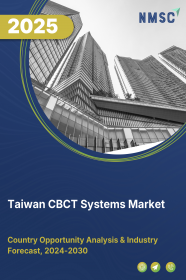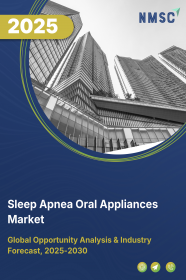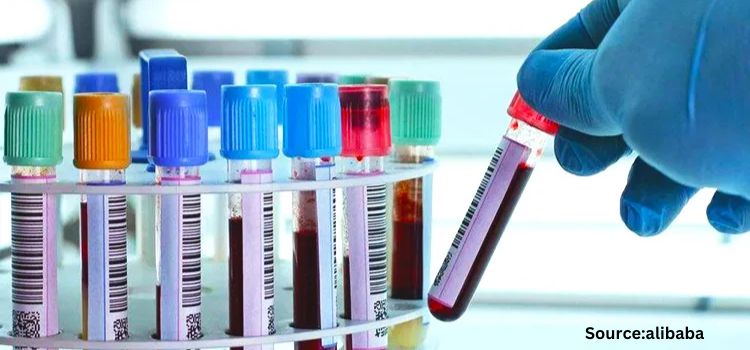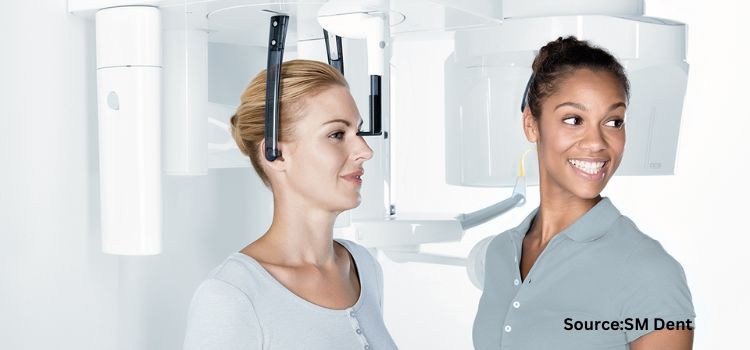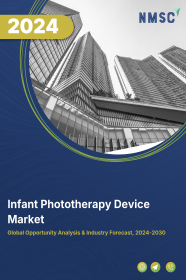
Infant Phototherapy Device Market by Light Source (Fluorescent Lamps, Light-Emitting Diodes (LEDs), Quartz Halogen Lamps, Gas Discharge Tubes), Configuration (Mobile Device and Fixed Device), End User (Hospitals and Neonatal Clinics)- Global Opportunity Analysis and Industry Forecast, 2021 – 2030.
Industry: Healthcare | Publish Date: 28-Nov-2024 | No of Pages: 275 | No. of Tables: 153 | No. of Figures: 123 | Format: PDF | Report Code : HC96
US Tariff Impact on Infant Phototherapy Device Market
Trump Tariffs Are Reshaping Global Business
Market Definition:
Global Infant Phototherapy Device Market size was valued at USD 90.03 million in 2020 and is predicted to reach USD 134.45 million by 2030 with a CAGR of 4.0% from 2021-2030.
Phototherapy devices are used in the treatment of neonatal jaundice which is commonly seen in newborn babies. This is the most common way to reduce the level of bilirubin, which is a compound that causes the jaundice. During the process of phototherapy, the baby is made to lie on a plastic crib and is exposed to a shining fluorescent light, which is absorbed by its bare skin. The specific wavelength of light used in this therapy breaks down the bilirubin into a simpler water-soluble form, which can be easily excreted through urine and stool.
Market Dynamics and Trends:
The factors fueling the growth of infant phototherapy device market are the rise in number of newborns, increasing prevalence of neonatal jaundice and effectiveness of phototherapy treatment over other treatment methods. Jaundice is the most common disease in newborns that requires medical attention. About 50% of full-term babies and 80% of premature babies develops jaundice in the first week of their life. In addition, factors such as low cost of treatment and ease of treatment, along with development in the medical infrastructure are also expected to propel the infant phototherapy devices market growth.
However, the side effects of phototherapy treatment and alternate modes of treatment such as IVIG treatment & exchange transfusion are expected to restrain the market growth to some extent. On the other hand, the huge market potential in developing regions and rise in mergers and acquisitions are expected to create new opportunities for the neonatal phototherapy device market players in future.
Market Segmentations and Scope of the Study:
The infant phototherapy devices industry share is segmented on the basis of light source, configuration, end user, and geography. Based on light source, the market is classified into fluorescent lamps, light-emitting diodes (LEDs), quartz halogen lamps, and gas discharge tubes. On the basis of configuration, the market is segmented into mobile devices and fixed device. Based on end users, the market is divided into hospitals, and neonatal clinics. Geographic breakdown and analysis of each of the aforesaid segments includes regions comprising North America, Europe, Asia Pacific, and Rest of the World.
Geographical Analysis:
North America holds the lion share of infant phototherapy device market during the forecast period. This is attributed to the factors including developed medical device industry, high rate of diagnosis and treatment of jaundice, rising consumer awareness, and the availability of technologically advanced treatment options. The United States neonatal phototherapy market is expected to lead the North American market during the forecast period.
For instance, in Feb 2020, according to March of Dimes examined national data and issued ratings, the rate of preterm birth in the United States rose by 10% as compared to the previous year.
However, Asia-Pacific is expected to show a steady rise in the infant phototherapy devices market due to the introduction of advanced phototherapy and the development of medical infrastructure in Asian countries such as China, India, and Indonesia. In addition, the increasing incidences of neonatal jaundice and the demand for cost-effective equipment are few other factors that are expected to increase the adoption of phototherapy in the region. Also, growing awareness regarding advanced phototherapy and improved healthcare infrastructure are factors expected to accelerate the neonatal phototherapy device market growth in this region.
Competitive Landscape:
The infant phototherapy device industry comprises of various market players such as Atom Medical Corporation, AVI Healthcare Pvt. Ltd., Natus Medical Incorporated, Motif Medical, Little Sparrows Technologies, Ningbo David Medical Device Co., LTD, Novos Medical Devices, General Electric Company, Ibis Medical Equipment & Systems Pvt. Ltd., Weyer GmbH and Zhengzhou Dison Instrument and Meter Co., Ltd. Strategic alliances, acquisitions and innovations along with R&D activities are the key strategies used by the market players to maintain their dominance in the market.
For instance, in June 2021, Motif Medical announced the launch of the BiliTouch phototherapy blanket that is designed to treat babies diagnosed with hyperbilirubinemia (commonly called neonatal jaundice). It's ultra-portable, lightweight, and battery-powered, making it ideal for use in hospitals and homes.
Also, in September 2019, Little Sparrows Technologies developed bilihut. Bilihut is an innovative ultra-portable neonatal phototherapy system that uses a cradle design to treat hyperbilirubinemia, commonly known as neonatal jaundice. The device has a unique curved light-emitting diode (LED) illuminated canopy that provides high-intensity blue light therapy. This highly portable device allows new-borns to receive effective jaundice treatment at home or anywhere in the hospital.
Key Benefits:
-
The report offers quantitative analysis of the current infant phototherapy device market and estimations through 2021-2030, that assists in identifying the prevailing market opportunities to capitalize on.
-
The study comprises a deep dive analysis of the market trend including the current and future trends for depicting prevalent investment pockets in the infant phototherapy device industry.
-
The report contains information related to key drivers, restraints and opportunities and their impact on the market.
-
The report includes key market players, market share, which helps understand their competitive analysis.
-
The competitive analysis of the market players along with their market share in the infant phototherapy device market.
-
The SWOT analysis and Porter's Five Forces model is elaborated in the study.
-
Value chain analysis in the market study provides a clear picture of the stakeholder’s role.
Infant Phototherapy Device Market Key Segments:
By Light Source
-
Fluorescent Lamps
-
Light-Emitting Diodes (LEDs)
-
Quartz Halogen Lamps
-
Gas Discharge Tubes
By Configuration
-
Mobile Device
-
Fixed Device
By End User
-
Hospitals
-
Neonatal Clinics
By Geography
-
North America
-
U.S.
-
Canada
-
Mexico
-
-
Europe
-
UK
-
Germany
-
France
-
Italy
-
Spain
-
Rest of Europe
-
-
Asia-Pacific
-
China
-
India
-
Japan
-
Australia
-
South Korea
-
Rest of Asia-Pacific
-
-
RoW
-
Saudi Arabia
-
South Africa
-
Brazil
-
Rest of RoW
-
Key Players:
-
Atom Medical Corporation
-
AVI Healthcare Pvt. Ltd.
-
D-Rev
-
GE Healthcare
-
Ibis Medical Equipment & Systems Pvt. Ltd.
-
Natus Medical Incorporated
-
Ningbo David Medical Device Co. Ltd.
-
Novos Medical Devices
-
Weyer GmbH
-
Zhengzhou Dison Instrument and Meter Co., Ltd
REPORT SCOPE AND SEGMENTATION:
|
Parameters |
Details |
|
Analysis Period |
2021–2030 |
|
Base Year Considered |
2020 |
|
Forecast Period |
2021–2030 |
|
Market Size Estimation |
Million (USD) |
|
Market Segmentation |
By Light Source (Fluorescent Lamps, Light-Emitting Diodes (LEDs), Quartz Halogen Lamps, Gas Discharge Tubes), Configuration (Mobile Device and Fixed Device), End User (Hospitals and Neonatal Clinics) |
|
Geographical Segmentation |
North America (U.S., Canada, Mexico) Europe (UK, Germany, France, Italy, Spain, Rest of Europe), Asia-Pacific (China, India, Japan, Australia, South Korea, Rest of Asia-Pacific), Rest of the World (Saudi Arabia, South Africa, Brazil, Rest of Row) |
|
Companies Profiled |
Atom Medical Corporation, AVI Healthcare Pvt. Ltd., Natus Medical Incorporated, Motif Medical, Little Sparrows Technologies, Ningbo David Medical Device Co., LTD, Novos Medical Devices, General Electric Company, Ibis Medical Equipment & Systems Pvt. Ltd., Weyer GmbH and Zhengzhou Dison Instrument and Meter Co., Ltd. |

















 Speak to Our Analyst
Speak to Our Analyst



